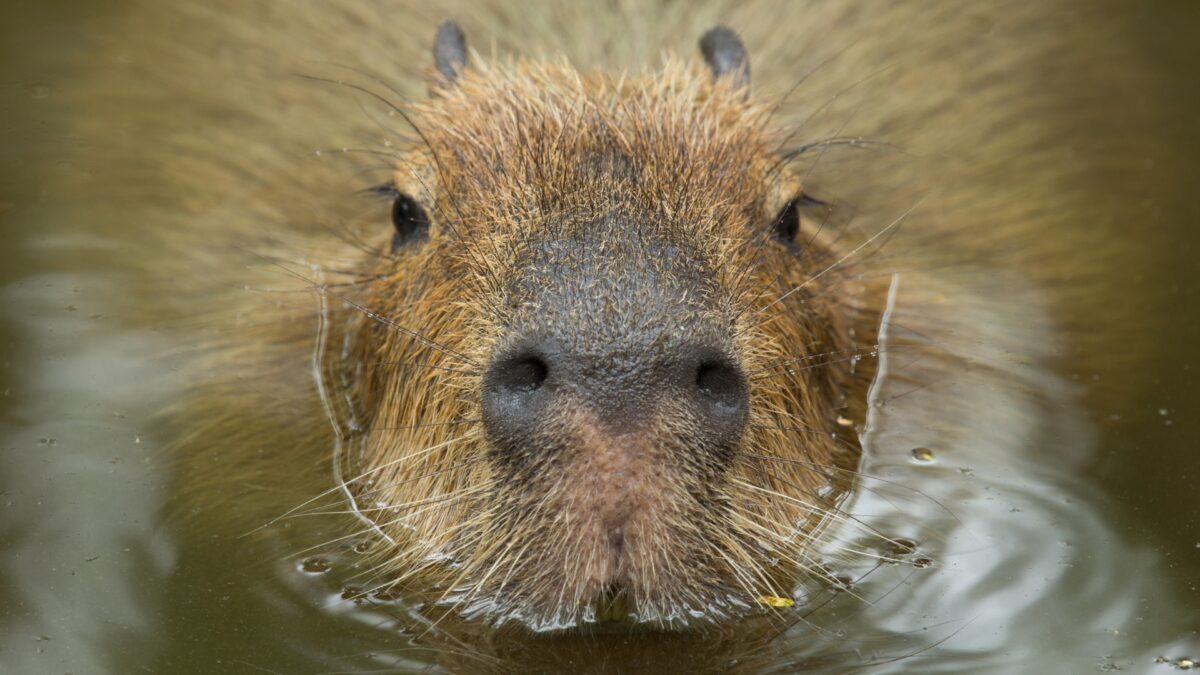Capybaras, known scientifically as Hydrochoerus hydrochaeris, are fascinating creatures that hold the title of the world’s largest rodents. These semi-aquatic mammals, found primarily in northern and central South America, have captured the attention of wildlife enthusiasts and researchers alike. This article, enriched with insights from capybaramag, delves into the intriguing world of capybaras, exploring their physical characteristics, habitat, social behavior, diet, and more.
Physical Characteristics: A Unique Rodent Profile
Capybaras stand out in the rodent family due to their size and distinctive physical features. They are the largest rodents on Earth, with a length of up to 4.6 feet and a height of around 2 feet at the shoulders. Their weight ranges significantly, from 77 to 143 pounds, making them comparable in size to some medium to large dog breeds. Unlike other rodents, capybaras have a less pronounced wedge-shaped face and more closely resemble their smaller relatives, the guinea pigs.
Their fur, which varies from reddish to dark brown, is specially adapted for their semi-aquatic lifestyle. It’s long and coarse, helping them to dry off quickly after swimming. Their eyes, ears, and nostrils are strategically positioned high on their heads, allowing them to remain alert and breathe easily while most of their body is submerged underwater. This adaptation is crucial for their survival, as it helps them to evade predators.
Habitat and Lifestyle: Masters of Aquatic Environments
Capybaras are found across various South American habitats, all of which have a common feature: an abundance of water. They thrive in marshes, riverbanks, and estuaries, where they can easily access the water they need for survival. Their presence in these ecosystems plays a significant role in the ecological balance, influencing both flora and fauna.
Their partially webbed feet are not just for swimming; they also aid in navigating the muddy and slippery banks of their aquatic habitats. Capybaras are excellent swimmers and can even sleep in water, keeping only their noses out to breathe. This ability is not just for relaxation; it’s also a defensive mechanism against predators.
Social Behavior: The Community Life of Capybaras
Capybaras are highly social and live in groups that can vary in size from 10 to as many as 40 individuals. These groups are usually dominated by a single male, with a hierarchy that is maintained through various social interactions. Communication within the group is vital and is achieved through a range of vocalizations. Each sound, from purring to whistling, has a specific meaning, such as signaling danger, maintaining group cohesion, or coordinating social activities.
The social structure of capybara groups is complex and fascinating. It includes various behaviors such as grooming, play, and collective foraging. This sociality provides several advantages, including increased vigilance against predators, better access to food sources, and more successful rearing of young.
Diet and Feeding Habits: An Herbivore’s Menu
Capybaras are strict herbivores, feeding primarily on a variety of grasses, aquatic plants, fruit, and even tree bark. Their diet is high in fiber but low in nutritional value, which is why their digestive system is specially adapted to extract the maximum amount of nutrients. One of the most unusual aspects of their feeding behavior is coprophagy, the consumption of their own feces. This behavior allows them to digest their food twice, extracting additional nutrients.
Their teeth are another adaptation to their diet. Like all rodents, capybaras have continuously growing teeth, which are worn down by their constant grazing. This adaptation is crucial for their survival, as it compensates for the wear and tear caused by their fibrous diet.
Reproduction and Lifespan: Continuing the Lineage
Capybaras have a unique reproductive cycle that is influenced by their habitat. The breeding season can vary, but it generally coincides with the wet season, providing ample resources for the nursing mothers and growing pups. Females typically give birth to a litter of four to five young after a gestation period of about 120 days. The young capybaras are precocial, meaning they are relatively mature and mobile from the moment of birth.
The lifespan of capybaras in the wild is up to 7 years, though this can be longer in captivity. Factors affecting their lifespan include predation, habitat loss, and human activities such as hunting.
Threats and Conservation: The Challenges They Face
While capybaras are not currently endangered, they face several threats that could impact their populations. Habitat loss due to agricultural expansion and urban development is a significant concern. Hunting for their meat and skin, particularly in certain South American regions, also poses a threat to local populations.
Conservation efforts for capybaras involve habitat protection and management, as well as regulations on hunting. Educating local communities about the ecological role of capybaras and promoting ecotourism are also vital in ensuring their survival.
Capybaras and Humans: A Relationship of Coexistence
Capybaras have a relatively peaceful relationship with humans. In areas where their habitats overlap with human activities, they have shown an ability to adapt and coexist. Their calm and social nature has made them popular in zoos and wildlife sanctuaries, where they often become favorites among visitors.
In some cultures, capybaras are also significant. For instance, an Amazon tribe refers to them as “master of the grasses,” highlighting their importance in local folklore and ecological systems.
Conclusion: The Significance of Capybaras
Capybaras are more than just the largest rodents in the world; they are a vital part of the ecosystems they inhabit. Their unique adaptations, social structures, and interactions with their environment make them a fascinating subject for study and conservation. As we continue to learn about these gentle giants, it’s crucial to ensure their continued survival and the preservation of their habitats.


